When driving your car, smoke may start coming from under its hood. At the same time, your car’s temperature warning lights may start glowing, telling you there’s a severe problem. You should stop your car on the roadside to troubleshoot and find an urgent fix to the problem before proceeding with your journey.
“But why is my radiator smoking?” There can be many reasons including faulty or dirty radiators, damaged radiator parts, water pumps, etc.
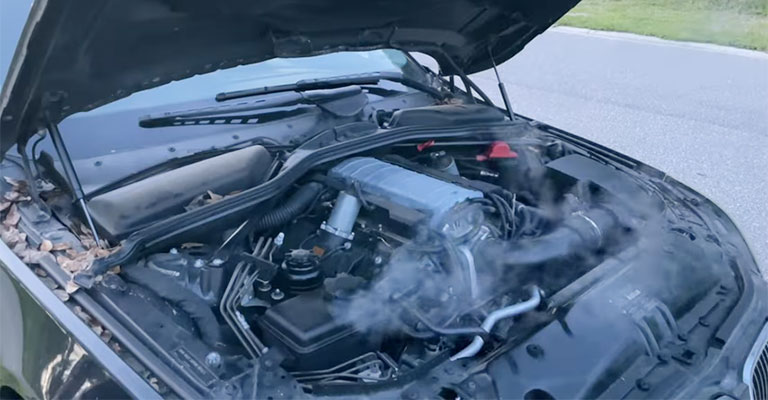
Why is My Radiator Smoking?
Radiator malfunctions, unlike some other car problems, are easily detectable. Because radiator damage causes overheating, it’s always best to act quickly if you notice this problem.
Reasons for Radiator Leaks
Faulty Radiator
Radiator leaks can be caused by a hole in the car radiator. Wear and tear may have caused the crack or hole. A bad jolt on the road may also damage the radiator, causing smoke to escape. A damaged car radiator can be identified by coolant leaks, low coolant levels, rising temperatures, and white smoke.
Faulty Radiator Cap
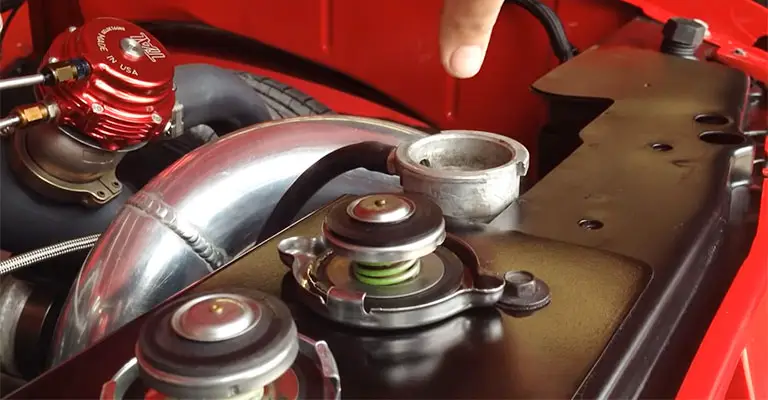
The radiator cap aids in the maintenance of cooling system pressure. The radiator cap, among other things, allows coolant to return to the radiator after the car has cooled down. However, the radiator cap may become faulty and cease to function properly.
A bad radiator cap can be identified when the engine overheats, the hose collapses, the reservoir overflows, air enters the cooling system, or coolant leaks. As a result, a damaged radiator cap can result in a radiator leak.
Dirty Radiator
If your car radiator becomes dirty, it may begin to emit smoke. Rust and sediments can build up in the radiator over time, impairing its performance. Debris may also become lodged, interfering with the flow of the coolant.
A faulty or clogged radiator can cause fluid discoloration, damaged fins, and coolant leaks, among other problems.
Damaged Radiator Fan
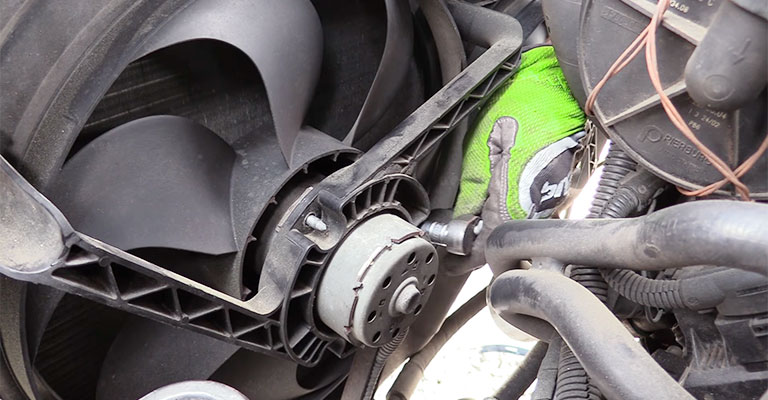
When your radiator fan fails, a small amount of steam may begin to emerge from your hood. This is especially common in most new cars equipped with electric fans. The fans only operate at low speeds, and if they fail, the engine may overheat until the car accelerates.
Damaged Water Pumps
When the water pump fails, you may notice smoke coming from the radiator. The water pump circulates fluid around the engine and returns it to the radiator. However, the pulley and bearings may become weak over time, reducing the water flow rate.
This may cause the engine to overheat, resulting in smoke from the radiator. Broken impeller blades and a broken timing belt are two other factors that can cause water pump damage. When the shaft seal leaks or the blades wear down, you know you have a faulty water pump.
Faulty Thermostat
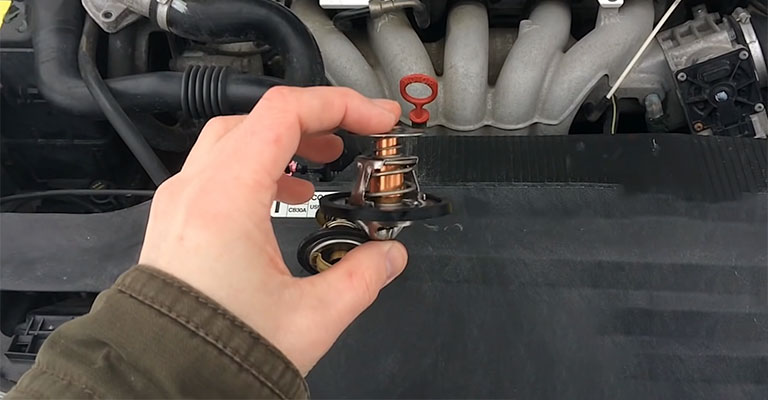
A thermostat is primarily responsible for controlling the flow of coolant into the radiator. When this critical device fails, the engine may overheat because the fluid may not be at the proper temperature to regulate engine temperature. When the thermostat is stuck in a closed position, it may also malfunction.
Leaking Hoses
The hoses used to circulate coolant to and from the radiator can cause smoke to emanate from the radiator. The hoses may rust and leak after collecting sediment for a long time. Wear and tear can also cause cracks, causing the hoses to leak.
Reduced Coolant Level
When coolant circulates within the engine, it cools. When the liquid level drops, smoke may begin to escape from the radiator. This drop could be caused by a coolant leak or long-term neglect.
When you don’t have enough coolant, your engine may begin to overheat. Your mechanic can tell whether there are any other causes besides low coolant levels.
Air in the Cooling System
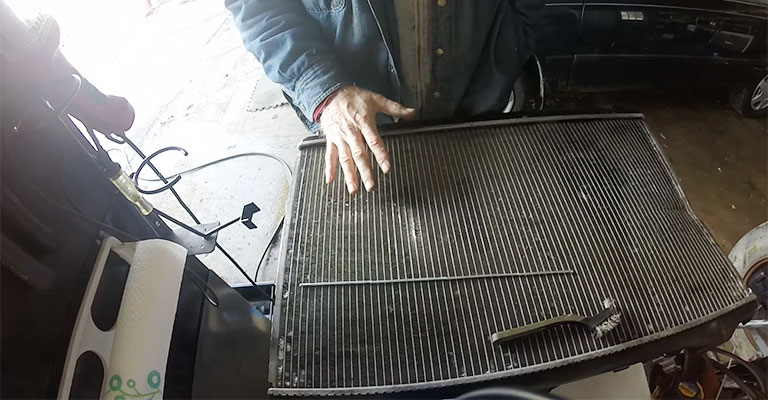
A cooling system operates in such a way that no air enters. When flushing the radiator, however, air may enter. This air may form pockets that obstruct the flow of the liquid, resulting in overheating.
How to Fix Radiator Leaks
Learning how to repair one is essential. However, because radiator leaks can be caused by a variety of factors, there is no single solution to this problem.
Damaged Water Pumps
Your water pump should always be in good working order because it circulates water between the radiator and your car engine to regulate temperature. If you notice coolant leaking from the water pump, there is a problem with the water pump.
Another sign is squeaking noises from the radiator. After cooling the engine, you should repair the water pump. If the timing belt is faulty, it can be replaced. Locate the damaged parts by removing the fun assembly and the water pump. A leaking water pump causes the cooling system to lose coolant, which causes overheating.
Faulty Thermostat
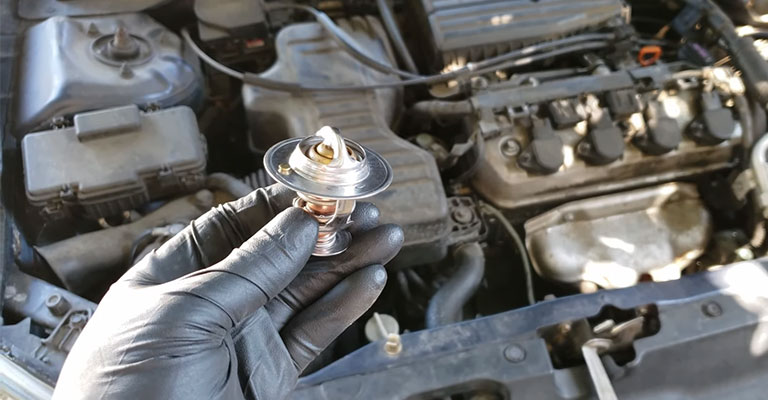
Radiator leaks can be repaired by replacing a faulty thermostat. A faulty thermostat can be identified by coolant leaks around it or an overheating warning on the dashboard. Because you must drain the coolant, you should only replace the thermostat when the car is cool.
Reduced Coolant Level
Inspect your coolant level regularly to ensure that it does not fall below the recommended levels. Determine and correct the cause of this drop. If you are frequently refilling the coolant, there is a leak. When the level drops, replenish the coolant. However, only after the engine has cooled should it be refilled.
Air in the Cooling System
During the flushing process, ensure that air doesn’t get inside the cooling system. Allow the engine to cool before flushing the cooling engine. Fill the reservoir with new coolant and run the car for a few minutes to ensure there’re no air pockets. During this process, turn the interior heater to the maximum.
Faulty Radiator Cap
You can tell a faulty radiator cap if the coolant overheats. Other indicators include leaking coolant and the collapse of the radiator hose. You should not remove the radiator cap until the engine is cool as the hot coolant may shoot out causing serious injuries. In most cases, a radiator cap should be replaced after five years.
Leaking Hoses
You can only keep your cooling system running smoothly if you change the hoses regularly. When the old hoses become swollen or cracked, replace them. Remember to drain your coolant before replacing it. After replacing the faulty hose, you should also flush the system before adding new coolant.
FAQs
How do I avoid radiator problems?
If you want to avoid radiator problems or other issues and save money at the auto repair shop, you should service your vehicle regularly.
Can I drive with a smoking radiator?
It’s not safe to drive the vehicle when it is overheating as it can risk additional engine damage.
Ending Statement
Although now you know the answer to ‘why is my radiator smoking’, don’t try to solve everything on your own if you do not have enough experience. Try to contact your mechanic to have a professional inspect your car. To avoid problems, you should have the entire cooling system screened every couple of years.
Leave a Reply